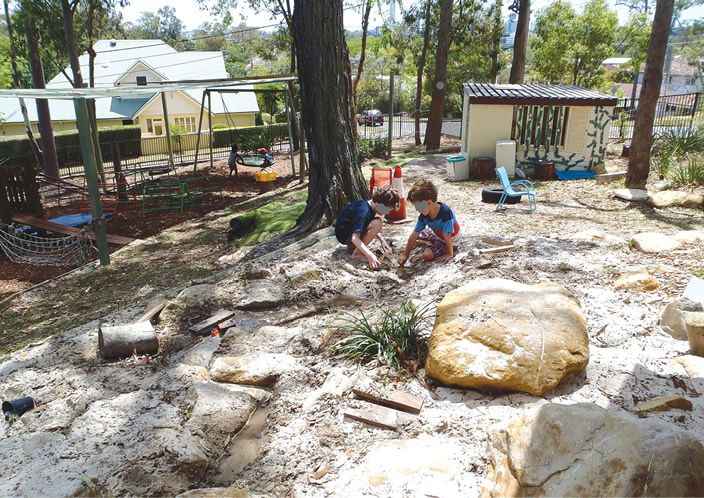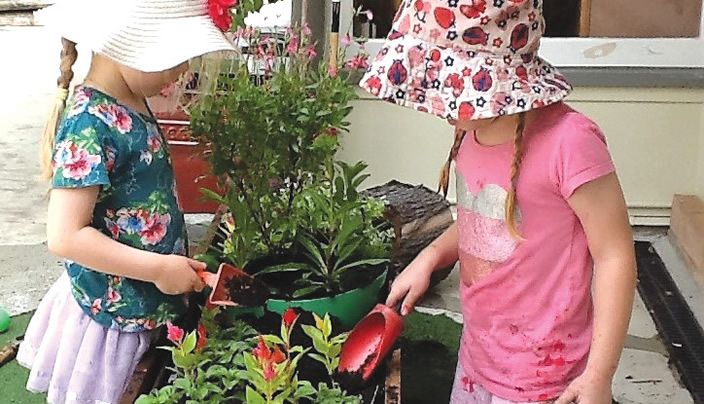
Three Melbourne early childhood education centres have been granted exceptions to national regulations regarding outdoor space – meaning children at these centres have no access to real nature or the outdoors on a daily basis. Journalist Sara El Sayed looks at how ‘fake nature’ can be damaging to children and the crucial role outdoor space plays in a child’s development.
The Department of Education, Employment and Workplace Relations define outdoor learning spaces as a necessary feature of Australian learning environments.
These spaces invite open ended interactions, spontaneity, risk taking, exploration, discovery and connection with nature. They foster an appreciation of the natural environment, develop environmental awareness and provide a platform for ongoing environmental education.
However, according to Early Childhood Australia, children in Australia are currently experiencing an increasing disconnection with nature. Evidence for this disconnection is diverse — for example, a toddler who finds it challenging to place their bare feet on grass or a four year old who suggests that apples are manufactured in supermarkets.
This harsh reality highlights the importance of environmental education and why exposing children to the outdoors is crucial to their development.
The National Quality Framework (NQF) outlined by the Australian Children’s Education and Care Quality Authority (ACECQA) states that for every child in an ECE centre there must be at least seven square metres of unencumbered outdoor space.
However, the Victorian Department of Education and Training has signed off on waivers for centres in Highpoint, Collins Street and Melbourne Central, making them exempt from this standard due to limited access to suitable land for childcare services.
As an alternative, these centres have created ‘simulated outdoor environments’ which include fake trees made out of concrete pillars, synthetic plants and grass, sky and clouds painted on walls, and small sand pits in plastic shells.
These centres claim they cannot provide children with outdoor areas due to geographical location and space restrictions.
A rationale given by the general manager of one of the exempt centres was that the children would never be disrupted by Melbourne’s extreme weather if they played in indoor spaces.
Associate Professor in Early Childhood Studies at the University of Melbourne, Dr Kay Margetts, said the justification for these exemptions is inadequate.
“It is ridiculous to claim that children are better off inside because of the Melbourne weather,” Dr Margetts said.
“A rainy day is not an excuse to deprive children of outdoor spaces all year round.
“Being exposed to the outdoors – particularly the air and the sunshine – on a regular basis is critical to a child’s health and wellbeing.
“Research shows that exposure to sunlight helps children improve their ability to see long distance.
“In addition to this, regular outdoor play helps children develop kinaesthetic awareness, spatial awareness, social and cognitive development and supports children’s creativity.
“Outdoor learning is and should be an integral part of an educator’s program planning – making it critical to have an outdoor space in every centre.
“There is nothing you can do inside that you can’t do outside, but there are things you can do outside that you can’t do inside.”
Dr Margetts said there are alternatives for centres that struggle with space restrictions in city locations.








































































































































